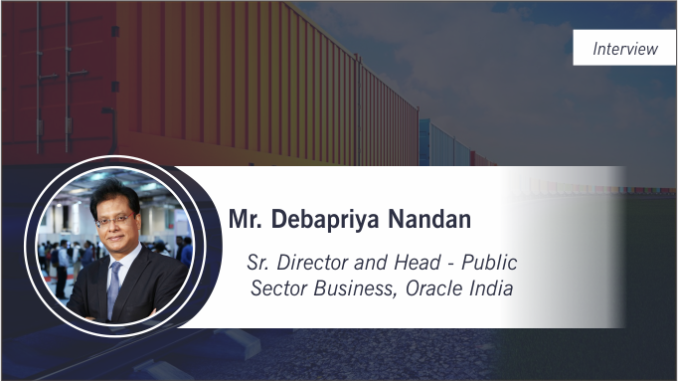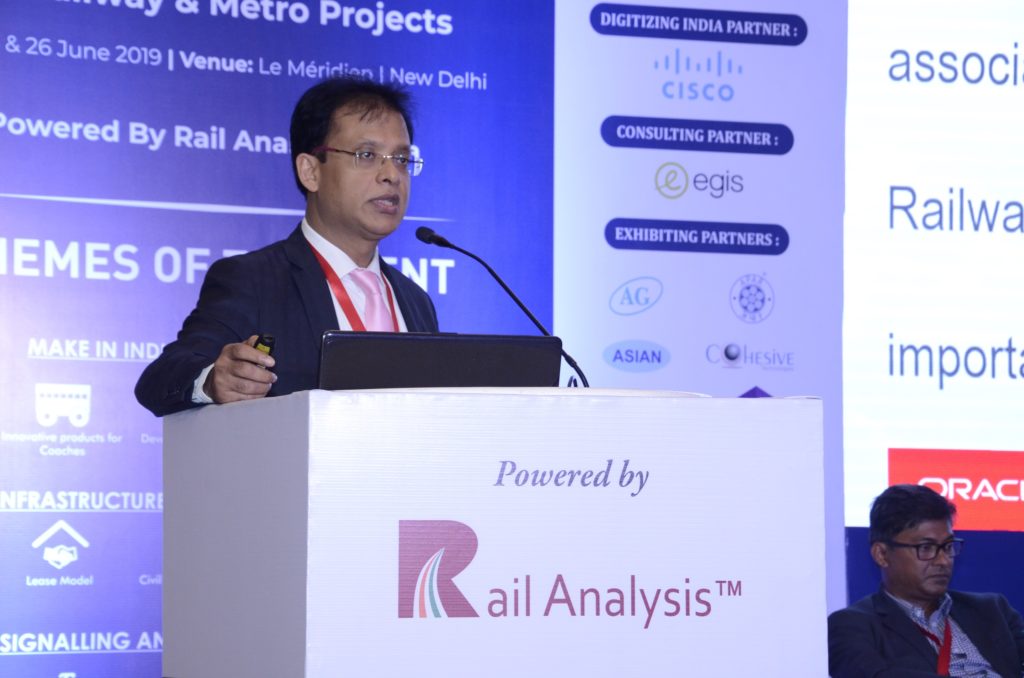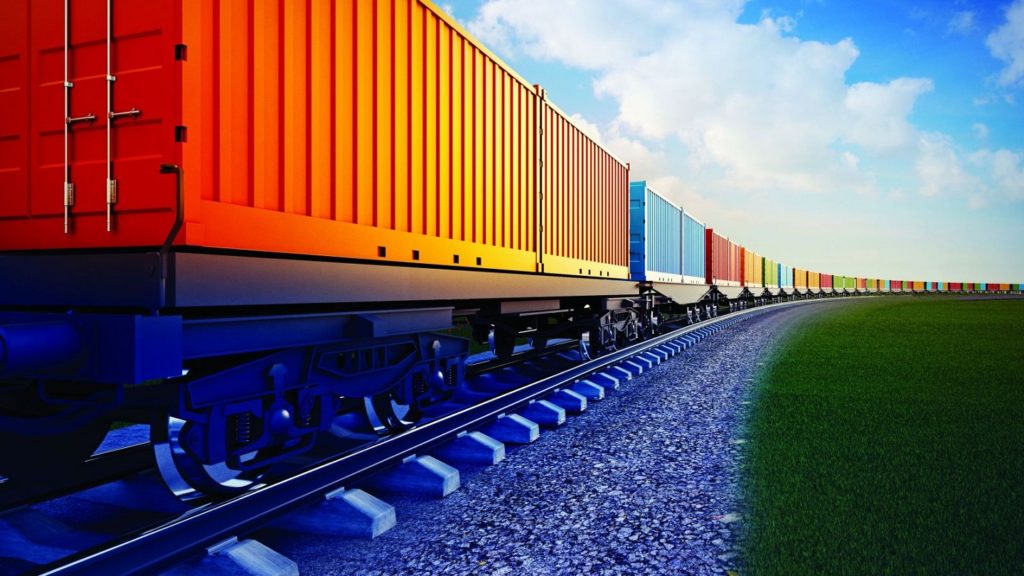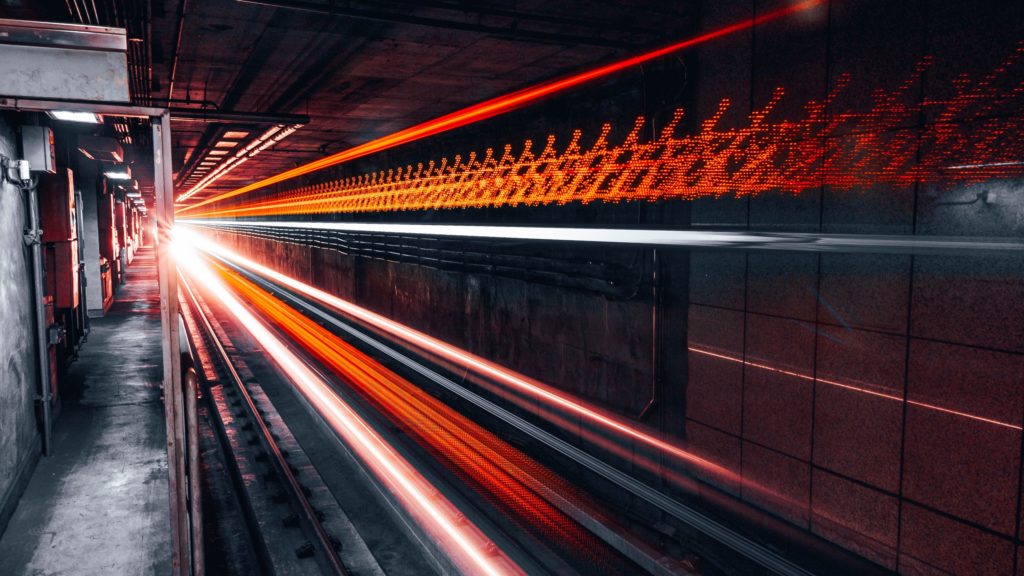

Mr. Debapriya Nandan , Sr. Director and Head – Public Sector Business, Oracle India
Rail Analysis: Can you please tell us about your current engagements with Indian Railways?
Mr. Debapriya Nandan: We have been supporting the Indian Railways as their technology partner for many years. We are proud of our association and look forward to helping the Indian Railways modernize its business operations and customer services with the latest and most advanced technologies, including cloud, artificial intelligence, autonomous database etc.
Currently, we are working with CRIS to develop their FOIS system (Freight Operations Information System), which runs on a Oracle middleware technology. The Passenger Reservation System (PRS) is based on the Next Generation e-Ticketing (NGeT) Platform which uses Oracle Database and some Oracle Middleware technologies, which deliver a good ticket booking experience for users on the IRCTC website.

Mr. Debapriya Nandan at Rail & Metro Technology Conclave 2019
Rail Analysis: Which all areas do you think will play a critical role in shaping the future of Indian Railways in terms of adoption of emerging technologies and automation?
Mr. Debapriya Nandan: The Ministry of Railways is already evaluating the use of Information and Communication Technology (ICT) along with emerging technologies to enhance customer experience, high-speed railways, operational safety and environment friendliness, while enhancing cost efficiency. Technology will continue to play a transformational role in optimizing Indian Railways. One such application which is being considered for transformational overhaul is Control Office Applications (COA).
The Control Office Application captures train movements in real time and the movement of scheduled and unscheduled trains is planned and controlled through the computer aided interface. It is this application that feeds the National Train Enquiry System (NTES) that provides passengers the latest information on train running. COA also provides train operation information to FOIS and ICMS.

Indian Railways is striving to improve their operations by using technology that captures data quicker and provides actionable insights that can form the basis of more intelligent decisions. The railways have also collaborated with ISRO to expedite satellite-based mapping of all its railway assets facilitating train movement information to be acquired and fed to the control charts using ISRO’s satellite-based realtime train information system (RTIS) automatically. The RTIS device installed in the locomotive detects position and speed of the train using GAGAN geo-positioning system and this information is being automatically fed into the COA application which increases the efficiency of Control Room Operations.
Today the Indian Railways generate hundreds of terabytes of data via 40 odd applications as well as from their
manufacturing and maintenance functions. Railways should consolidate this data under an enterprise level integrated architecture, where all their applications can reside. This single source of data will result in better analytics, which will result in more grounded insights based on real time data and hence better decisions. Consolidated data would not only be easier to maintain, it would also mean more secured data, as there will be no need for transferring the data from one place to another.

Rail Analysis: Everyone is talking about ‘Artificial Intelligence’, where does Oracle see the use of the same in Railway Operations and what offerings you have for Railways?
Mr. Debapriya Nandan: Oracle has Artificial Intelligence embedded in all its products. For Example, in order to achieve the Network Optimization through COA, as it captures real time train movements through GPS enabled devices on the train, the decisions to hold a train for a certain time period or let it pass is made based on the availability of vacant track in the next zone and also basis various other considerations. Over a period of time the pattern of decision making can be developed based on similar scenarios and when they occur the system is able to offer a set of options for the railway officer in charge of the control office, which he may approve or reject as the case may be. Through AI capabilities, the system is able to make out patterns of behavior of responses from repeated past actions and is able to predict best response in a timely way.
Similar decision making can be achieved for various data-based applications under the umbrella of ‘Enterprise
based Database’. Such a solution makes sense for a large organization like Indian Railways as retaining the data with one technology provider automatically enhances efficiency and speeds up the decision making process.

Rail Analysis: Why is cloud based computing important for railways and how does Oracle propose to implement the same for Indian Railways?
Mr. Debapriya Nandan: Commercial organizations understand the importance of digital to their business. Social, mobile and cloud technologies are ubiquitous to the daily lives of their customers and to their success. The more digital engagement becomes ingrained in modern culture, the more important it becomes for government to meet the expectations of citizens accustomed to immediate responses. Government entities like Indian Railways must embrace innovative platforms and modern tools to deliver appealing, innovative services while also offering parallel solutions to those lacking digital access. As government agencies have at their disposal valuable repositories of public data, AI-powered apps can perform higher-order tasks typically performed by knowledge workers.
Oracle is proud to be associated with the Indian Railways in their digital transformation journey. We can support them in a lot of areas like helping them upgrade their IT systems like HR management system, network optimization and master data management.
Image Credits : Oracle , Rail Analysis and Pixabay

